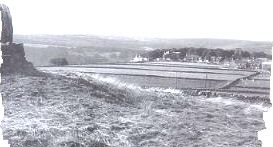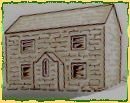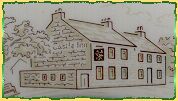


The village, 984 ft above sea level, is a delightful place, situated on the
hill above Stocksbridge and the beautiful Ewden valley. It is surrounded by
superb scenery, and is an excellent starting point for moorland walks
leading to Derwent, Midhope and many other remote and rural areas.
The village square is surrounded by stone houses,  cottages,
cottages,
and the Castle inn.

BOLSTERSTONE, in the township of Bradfield, and parish of Ecclesfield, upper-division of Strafforth and Tickhill; 9 miles from Penistone and Barnsley. The Church is a perpetual curacy, in the deanry of Doncaster, value, p.r. !60L. Patron, J. Rimmington, Esq.
The chapel here appears to have been founded as early as 1412, by Sir Robert Rockley; originally a private chantry of that family, though it came at length to be used as a place of public worship by the inhabitants of the manor, living at a great distance. At the time of the foundation of this chapel, the Rockleys were owners of the Manor of Bolsterstone, which it appears they had obtained by the marriage of Robert de Rockley with Alice, the sole daughter of Sir Thomas Sheffield. Robert de Rokeley lived in the time of Richard II. and was the chief of an ancient family residing at Rockley, in Worsboroughdale, where they appear to have been seated as early as the reign of Henry II. -- Hunter's Hallamshire.
At one time this was owned by Sam Costa, a popular performer in radio programmes, including ITMA, broadcast during the 1940s. There is also a shop-cum-post office.
There have been a succession of churches since the 12th century, but the present St Mary’s was built in 1879. In the vestry are the Bland Dole Boards, formerly displayed on the whitewashed walls of the previous Bland church. They gave information as to who was eligible to receive funds, but not if they were receiving parish relief, nor if they were Methodists. This money was paid on Christmas Eve. The Dole Boards were found in the roof of the chancel, and there is a list of incumbents from 1412 to the present day. In 1871, the village had its own parish hearse, which was kept in the former bier house. To the east of the church is a porter’s lodge doorway and part of an archway, which were probably part of the castle built about 1250 by the Sheffields, who were in the area until the 14th century. By the lychgate are the village stocks, which are still in good condition — what a pity they are no longer used! In the south-east corner of the churchyard are two gigantic stones, perhaps lintel stones of a stone circle. Two fields away from the village in Walder’s Low is the burial ground of Walder, a Saxon chief. This is a hilltop, 1,009 ft above sea level, and the mound has a heap of stones surmounted by one large upright stone, and has yet to be explored. It was dismantled during the Second World War, as it was thought to be a landmark for enemy bombers, but when hostilities ceased it was re-erected. There are good walks by the Ewden reservoir. The nearby village of Ewden was flooded during the construction of the dams and the village now consists of just a few modern houses. In the Second World War, the Dambusters practiced over the Ewden dams, which resulted in many complaints being sent in about the low level flying. St Mary’s is a typical village church, where the bells are rung prior to the services, with bell ringers coming from far afield to visit the church. Annually a village fair is held to raise money for church funds and charities. Across the road from the church is the Church of England village school, built 300 years ago. The Bolsterstone Male Voice Choir enjoys the reputation of being one of the top choirs in the British Isles. It was formed in 1934 by a group of village lads, fed up with nothing to do. The choir, which still has one original member, has grown in size and stature, and now has nearly a hundred singers.
Their reputation is world wide, a fact proven by several Continental tours.
Unknown author